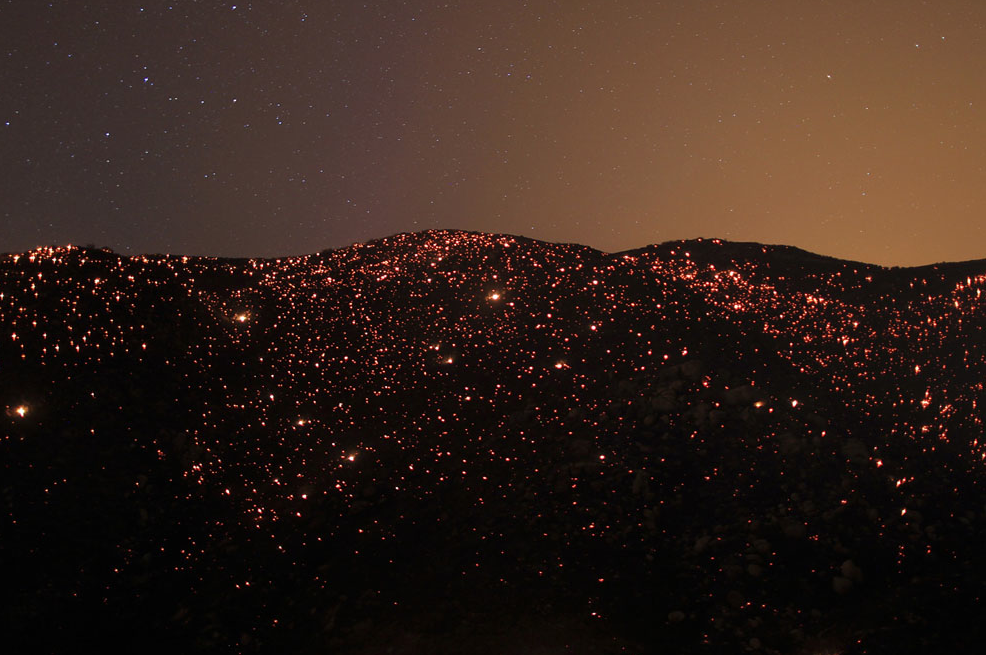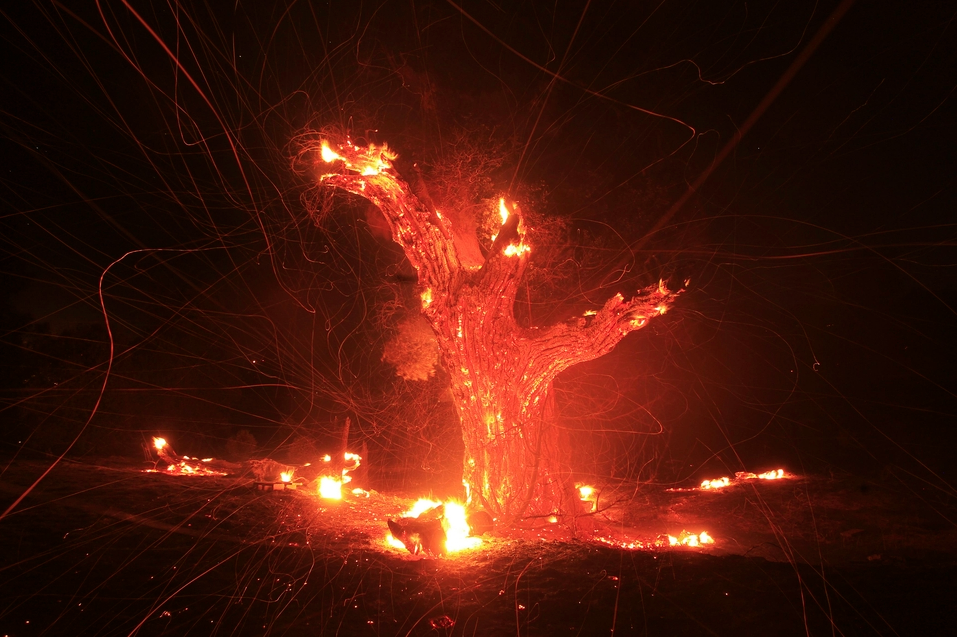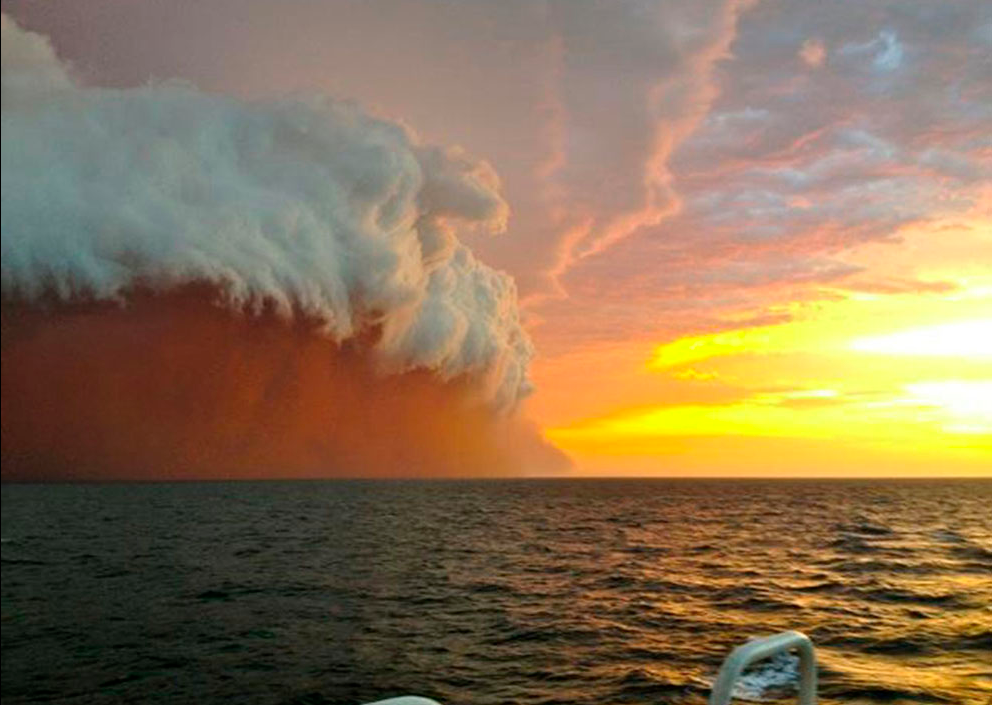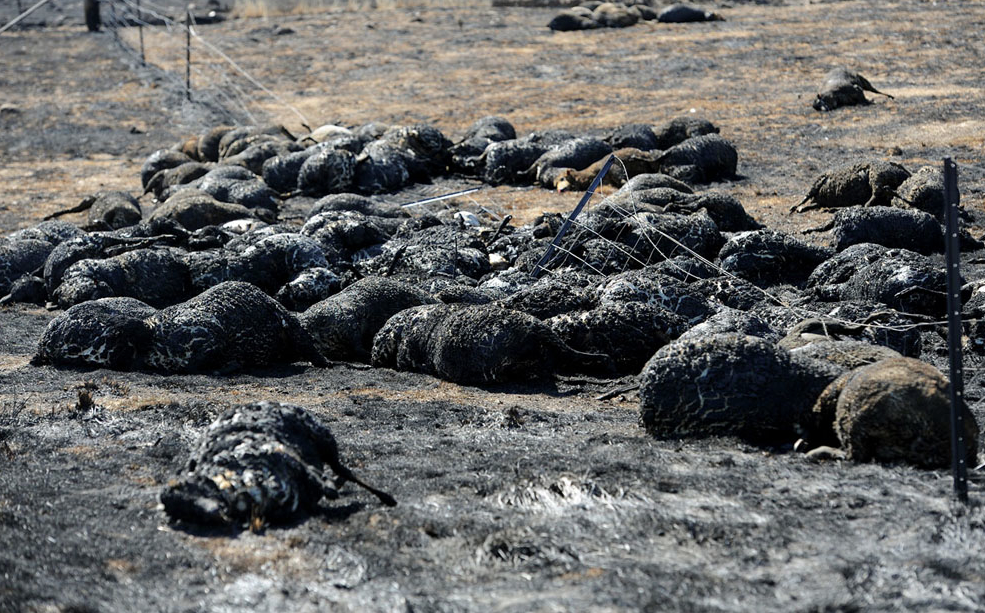One of the complaints against the photograph as a medium of representation is that offers a partial view of the world that distorts reality. The complaint is spot on, though to be fair we have to acknowledge it recognizes a burden that every mode of representation bears. A more useful approach is to recognize the capacity of photographs to offer multiple views of the world that frame and underscore the complexities of the universe. Consider the photograph below, an image that circulated widely on mainstream slideshows last week.
Without a caption it is hard to know exactly what we are looking at, but it is also hard not to look at it. Shot from a distance and on high it appears to be a landscape of some sort, and the contrast between the horizon and the body of the image invites our attention. The lights below appear to twinkle, lending something of a human quality to the image, perhaps marking something like civilization, but it is the aura that marks the boundary between the horizon and the body of the image that gives the image its distinctive quality. Perhaps the sun is setting, or maybe it is about to rise, but in either case, the image invokes what we might call a sense of “tranquility” that is altogether aesthetically pleasing. It is a beautiful image, and whatever it is that is being represented, the perspective calls attention to that beauty.
From a different perspective, however, the affect is somewhat different.
Shot now from a much closer vantage, the field of vision straight on, the contrast between lightness and darkness is not gradual but stark, and as a result the image does not invite a sense of tranquility but rather a sense of violent disruption. It is still hard to avoid looking at the image, however, but what in the earlier image appeared to be a quiet and restful twinkle is here blazing hot. Indeed, one can almost feel the heat consuming what appears to be a tree, and in its own way it reaches out to whomever stands in front of it, at once pulling them in and warning them off. It is what Edmund Burke characterized in the 18th century as an instance of the sublime, a representation of a natural scene that manages the contrast between intense lightness and darkness so as to invoke simultaneously a sense of horror and pleasure.
What is important to acknowledge is the fact that both photographs are of the same scene at roughly the same time. In each instance we are observing a wildfire burning out of control in Banning, California. Is the scene tranquil or violent? Is world represented here harmonious or out of control? Is it beautiful or is it sublime? The answer to all of these questions is, in some measure, yes! The event being represented is simultaneously tranquil and violent, harmonious and out of control, beautiful and sublime. And it is the capacity of the camera to show us how such apparently contradictory qualities can (and regularly do) co-exist simultaneously in a single event or phenomenon that makes it such a powerful and important technology of representation.
In short, what might be understood as the weakness of photography as a medium of representation might well be its greatest strength. It is all a matter of how you look at it!
Photo Credit: Gene Blevins and David McNew/Reuters



